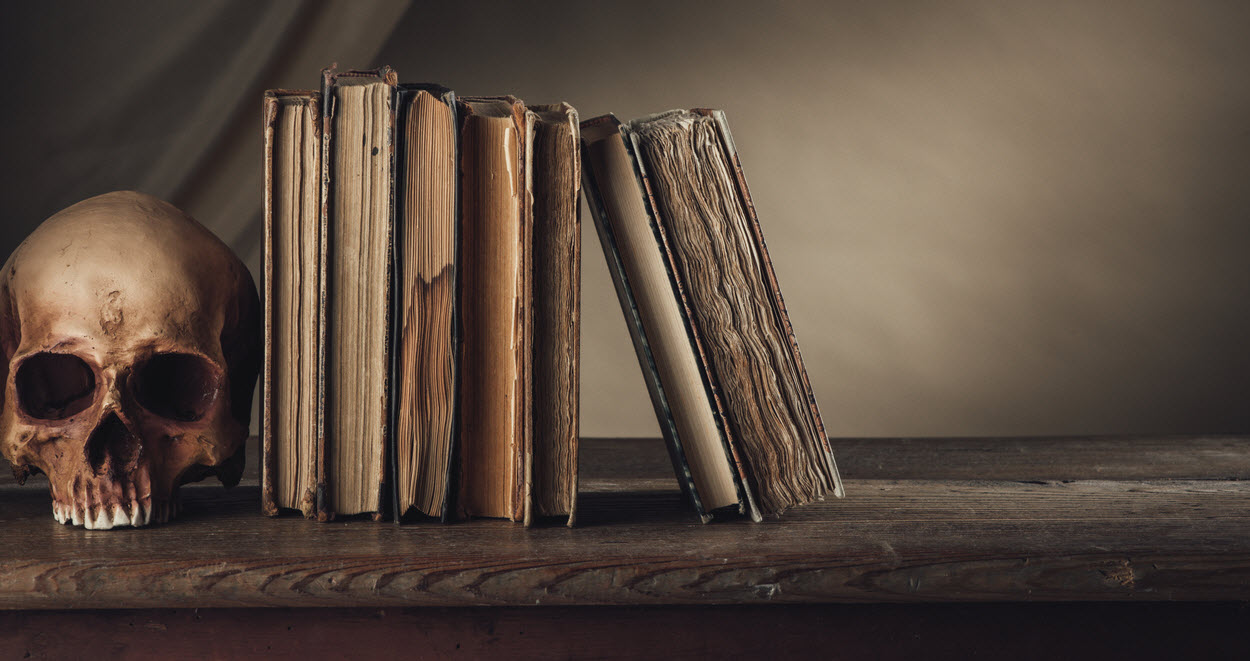| By Sarah Robertson |
Gothic literature is a genre that relies on dark, disturbing imagery; atmospheric settings; and unnerving plot points to induce discomfort in the reader. The genre has shown a remarkable persistence and ability to evolve since its inception in the nineteenth century, and it typically strives to unsettle the reader, often confronting them with disturbing elements of death, dreams, and decay against a backdrop that relies heavily on the weight of past tragic events. You are invited to explore the dark, haunted realms of gothic literature with Novels for Students, volume 68, a themed volume that covers a diverse selection of titles from the genre.
Gothic literature takes many forms, including supernatural, horror, mystery, and thriller. In Novels for Students, volume 68, the supernatural elements are exemplified in works such as Interview with the Vampire, The Girl from the Well, and The Dead of Winter. Anne Rice’s 1976 debut novel, Interview with the Vampire, was a groundbreaking work of supernatural literature. A vampire story, the novel’s characters vividly portray human emotions as they confront love, death, and the desire for family connection. The Dead of Winter, by Chris Priestley, and The Girl from the Well, by Rin Chupeco, feature another classic element of gothic literature: ghosts. Overall, the supernatural aspects of gothic literature have deep roots in the genre that continue into the twentieth and twenty-first centuries.
The gothic genre often includes a sinister atmosphere that evokes an overall feeling of horror. White Crow, by Marcus Sedgwick, features traditional gothic elements, including morbid imagery and gloomy atmospherics. Similarly, Anna Dressed in Blood is a young adult horror novel by Kendare Blake about a teenage ghost hunter and contains magic, ghosts, and mayhem. The unsettling atmospheres of gothic novels also make the genre ripe for thrillers such as The Boy at the Keyhole by Stephen Giles, and The Long Weekend, by Savita Kalhan, both of which feature preteen protagonists.
The genre’s historical roots in Colonial America and Victorian England can make the stories seem divorced from modern issues. Many contemporary gothic novels are self-consciously challenging these assumptions by celebrating diversity, gender, sexuality, and inclusivity. White Is for Witching, by Helen Oyeyemi, integrates Caribbean folklore into the story, while Sing, Unburied, Sing, by Jesmyn Ward, uses gothic elements to expose the injustices perpetrated against Black people in the American South. Silvia Moreno-Garcia’s Mexican Gothic is set in a Mexican mountain town and features a mestiza heroine, while The Dark Descent of Elizabeth Frankenstein, by Kiersten White, also includes a female protagonist, as it reimagines a classic gothic novel from the perspective of a woman. Cemetery Boys, by transgender author Aiden Thomas, is about a relationship between two young men, one of whom is a gay, transgender Cuban American.
The gothic genre has evolved over centuries, becoming more stylistically and thematically adventurous. But its core elements of moody settings, altered mental states, and disturbing imagery remain persistent and relevant. Learn more about gothic literature—and the many diverse novels referenced here—in Novels for Students, volume 68!
About the Authors
Sarah Robertson is a writer, editor, and longtime contributor to For Students.


